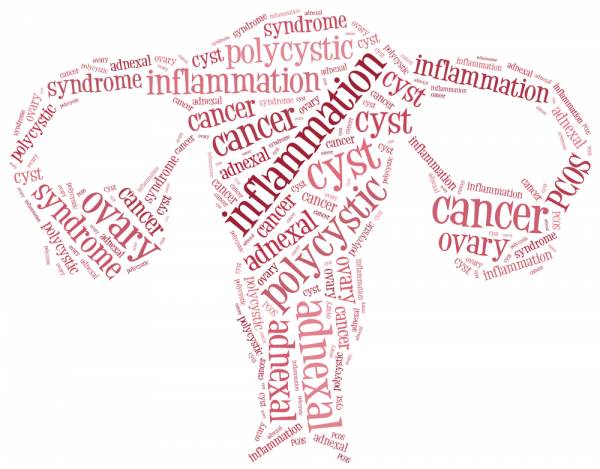If, like me, you’re a woman living with polycystic ovarian syndrome (PCOS), then strength training should be a part of your treatment plan. Strength training doesn’t just help you get stronger and increase your muscle mass. Pumping iron also sparks important physiological change that can mitigate many of PCOS’s most distressing symptoms.
The current research on PCOS and resistance training is limited to four studies. In spite of this lack of research, women with PCOS should be eager to get into the weight room. All four studies concluded that regular strength training helped PCOS women lose weight. And let’s not forget about the hundreds of other studies that support the idea that strength training is a pathway to long-term health and vitality.
Strength Training, Insulin Resistance, and PCOS
Women of all ages and fitness levels, including those with type 2 diabetes, can improve their response to insulin by strength training. This is particularly important to women with PCOS because we often suffer from insulin resistance, which is the inability to properly react to our own insulin.
When the body does not respond to insulin, the pancreas produces more in an effort to elicit the proper reaction and restore blood sugars to a safe level. The presence of excess insulin in the female body creates a hormonal imbalance that will boost androgen production by the ovaries. This vicious cycle is at the heart of the polycystic ovarian syndrome.
Progressive strength training increases the size of skeletal muscle and might enhance the muscles’ ability to manage glucose. Researchers believe that these adaptations result in increased insulin sensitivity independent of a woman’s weight. So, even if regular visits to the weight room don’t move the numbers on the scale, a woman with PCOS can still improve her overall health.

Weight Training, Belly Fat, and Bad Cholesterol
Many women hit the gym with the goal of ditching belly fat. This is especially true of PCOS women because we tend to carry our weight around the midsection. A thick middle is not just a problem during bikini season. Many chronic health conditions like diabetes, cardiovascular disease, and PCOS are associated with having excess belly fat.
Novice exercisers who want to shrink their bellies gravitate toward moves like crunches that target the abdominal muscles, but they would be better off reaching for a pair of dumbbells. Strength training does a much better job of fighting abdominal fat. A University of Pennsylvania study found that overweight and obese women, ages 24 to 44, who were assigned to an hour of weight training twice a week reduced their proportion of body fat by nearly four percent.
PCOS and high LDL (bad cholesterol) also go hand-in-hand. Fortunately, regular resistance training could help kick that high LDL to the curb. Studies on both healthy women and women with type 2 diabetes have demonstrated a clear connection between strength training and lower LDLs.
The Best Way to Lift Weights for PCOS
Now that you’re motivated to start lifting, you probably want an answer to the big question: what’s the best strength training program for PCOS? There are no specific guidelines for using resistance training as part of a PCOS treatment plan – yet. But don’t let that discourage you. Researchers at the University of Western States are conducting studies on the topic as we speak.
The American Diabetic Association (ADA) has also outlined exercise guidelines for type 2 diabetics, and experts have reason to believe that the same protocols will work well for PCOS women. Type 2 diabetes is similar to PCOS in many ways, such as insulin resistance, excess abdominal fat, high LDL levels, and obesity. These similarities indicate that PCOS women and type 2 diabetics should strength train with the same goals in mind – to encourage physiological adaptions that will reduce or eliminate these risk factors.

The ADA recommends that patients strength train two to three times a week on non-consecutive days. Trainees should perform a combination of exercises that will work every major muscle group. The ADA also suggests that the intensity of these sessions be relatively high, with a recommended three sets of eight to ten repetitions for each exercise.
In order to create physiological changes in your body, the exercises need to progress in difficulty. Once an exercise becomes easy to perform for eight to ten repetitions, the resistance level should be increased or a more challenging exercise should be selected.
Strength training will help you reduce or completely prevent some of PCOS’s most menacing complications. If you are ready take charge of your PCOS, take a step towards the weight room. A strong body is a formidable opponent in the fight against polycystic ovarian syndrome.
References:
1. Boyden TW, Pamenter RW, Going SB, et al. Resistance Exercise Training Is Associated With Decreases in Serum Low-Density Lipoprotein Cholesterol Levels in Premenopausal Women. Arch Intern Med. 1993;153(1):97-100.
2. Cheema, Birinder S., Lisa Vizza, and Soji Swaraj. “Progressive Resistance Training in Polycystic Ovary Syndrome: Can Pumping Iron Improve Clinical Outcomes?” Sports Medicine 44, no. 9 (2014): 1197-207. May 29, 2014.
3. Cuff, Darcey J., Graydon S. Meneilly, Alan Martin, Andrew Ignaszewski, Hugh D. Tildesley, and Jiri Frohlich. “Effective Exercise Modality to Reduce Insulin Resistance in Women With Type 2 Diabetes.” Diabetes Carw26, no. 11 (2001): 2977-982.
4. Eves, Neil D., and Ronald C. Plotnikoff,. “Resistance Training and Type 2 Diabetes Considerations for Implementation at the Population Level.” Diabetes Care 29.8 (2006): 1933-941. Web.
5. Poehlman,, Eric T., Roman V. Dvorak,, Walter F. DeNino, Martin Brochu, and Philip A. Ades. “Effects of Resistance Training and Endurance Training on Insulin Sensitivity in Nonobese, Young Women: A Controlled Randomized Trial.” The Journal of Clinical Endocrinology & Metabolism 85.7 (2000): 2463-468. Web.
Photos 1 and 3 courtesy of Shutterstock.
Photo 2 courtesy of Savannah Wishart.






